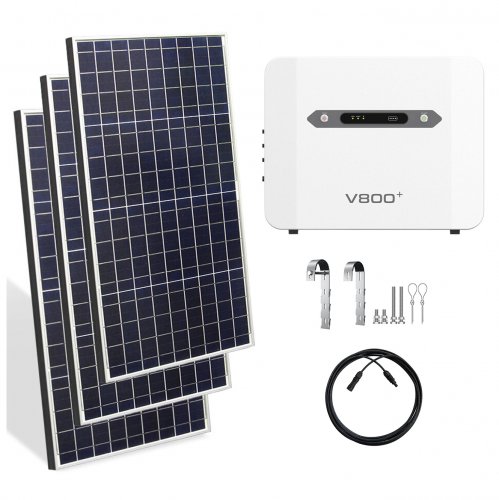Advances In Carbon Coating: Enhancing Performance In Energy Storage And Conversion
Carbon coating, a surface engineering technique involving the application of a thin layer of carbonaceous material onto a substrate, has emerged as a cornerstone strategy for advancing materials science, particularly in the realm of electrochemical energy technologies. This seemingly simple modification confers a host of beneficial properties, including enhanced electronic conductivity, improved structural stability, and superior interfacial compatibility. Recent research has moved beyond conventional approaches, focusing on precision engineering, novel carbon precursors, and multifunctional designs, thereby unlocking new performance benchmarks for a wide array of applications.
Recent Research and Technological Breakthroughs
A significant thrust of recent work has been the shift from uniform, amorphous carbon layers towards more sophisticated architectures. While chemical vapor deposition (CVD) remains a gold standard for producing high-quality, conformal coatings, researchers are increasingly leveraging milder, solution-based processes that offer scalability and tunability. For instance, the use of dopamine self-polymerization to form polydopamine (PDA) films, which are subsequently carbonized, has gained immense popularity. This biomimetic approach allows for a uniform coating on virtually any substrate, regardless of its geometry, and the thickness can be precisely controlled at the nanoscale. A study by He et al. (2022) demonstrated that a precisely engineered N-doped carbon coating derived from PDA significantly mitigated the volume expansion of silicon anode particles in lithium-ion batteries (LIBs), leading to a dramatic improvement in cycling stability.
Beyond mere conductivity enhancement, the functionality of carbon coatings is being radically expanded through heteroatom doping (e.g., N, S, B, P). Nitrogen doping, in particular, has been shown to induce electron donor characteristics, modify the work function, and create more defective, active surfaces. This is not just beneficial for electrodes but also for catalysts. For example, in the oxygen reduction reaction (ORR) crucial for fuel cells and metal-air batteries, coating cobalt or manganese oxide nanoparticles with N-doped carbon shells creates a synergistic effect. The carbon shell protects the core from agglomeration and dissolution, while the doping creates highly active sites, often outperforming precious metal catalysts (Wang et al., 2021).
Another groundbreaking area is the development of "smart" or multifunctional coatings. Researchers are no longer viewing the carbon layer as a passive shell but as an active component of the system. A notable breakthrough involves the creation of Janus-like or gradient coatings. For instance, a dual-layer coating on a lithium metal anode might consist of an inner lithiophilic layer (e.g., doped with ZnO nanoparticles) to guide uniform lithium plating and an outer lithiophobic, mechanically robust carbon layer to suppress dendrite growth (Zhang et al., 2023). This level of design sophistication represents a leap from single-purpose coating to integrated interface management.
Furthermore, the application of carbon coating has been extended to next-generation battery technologies. For sodium-ion and potassium-ion batteries, which suffer from larger ion sizes and slower kinetics, carbon coating is almost indispensable for electrode materials. Recent studies on Prussian blue analogues (PBAs) and polyanionic cathodes have shown that a thin carbon coating can drastically improve Na+ ion diffusion and electronic wiring, making previously impractical materials viable (Xie et al., 2022). Similarly, in lithium-sulfur batteries, coating the sulfur cathode or the separator with a porous, doped carbon layer acts as a polysulfide trap, physically and chemically confining the active material and curtailing the notorious shuttle effect.
Future Outlook and Challenges
The future of carbon coating research is poised to become even more interdisciplinary and precise. Several key directions are anticipated:
First, atomic-level precision and novel carbon allotropes will be explored. While current coatings are largely amorphous or graphitic, the controlled synthesis of coatings with specific sp2/sp3 carbon ratios or even the integration of graphene-like or diamond-like carbon phases could offer unprecedented properties in terms of hardness, conductivity, and ion transport. The use of machine learning to predict the optimal coating parameters (precursor, temperature, thickness) for a given substrate-material system could accelerate discovery and optimization.
Second, in-situ and operando characterization will be critical. Truly understanding the dynamic evolution of the coating-substrate interface during electrochemical cycling or catalytic reaction is the next frontier. Techniques like in-situ transmission electron microscopy (TEM) and Raman spectroscopy will provide invaluable insights into failure mechanisms, such as crack formation or delamination, guiding the design of more resilient coatings.
Third, sustainability will become a central concern. The field must increasingly focus on developing green and low-cost carbon precursors derived from biomass (e.g., lignin, cellulose) or waste products, moving away from traditional fossil-based precursors. The life-cycle analysis of the coating process itself will be important for large-scale industrial adoption, especially in the energy sector.
Finally, the application scope will continue to broaden. Beyond energy storage, carbon coatings are finding new roles in photocatalysis for environmental remediation, biomedical devices for improved biocompatibility, and tribology for wear resistance. The fundamental principles of interface engineering learned in electrochemistry will be translated to these diverse fields.
In conclusion, carbon coating has evolved from a simple conductive additive to a sophisticated platform for interface engineering. Through precise control over composition, architecture, and functionality, researchers are continuously pushing the boundaries of material performance. As synthesis techniques become more advanced and our fundamental understanding deepens, the deliberate design of carbon coatings will remain a powerful and versatile tool for enabling the next generation of technological innovations.
References:
1. He, Y., et al. (2022). A Mussel-Inspired Polydopamine-Derived Carbon Nanotube Coating for High-Performance Silicon Anodes.Advanced Energy Materials, 12(15), 2103201. 2. Wang, X., et al. (2021). N-Doped Carbon Shells Coated on Cobalt Oxide Nanoparticles as Efficient Bifunctional Oxygen Electrocatalysts.ACS Applied Materials & Interfaces, 13(4), 4980-4989. 3. Zhang, R., et al. (2023). A Janus-Faced Carbon Coating Design for Stable Lithium Metal Anodes.Nature Communications, 14, 1089. 4. Xie, Y., et al. (2022). Carbon-Coated Na3V2(PO4)3 for High-Rate and Long-Life Sodium-Ion Batteries: A Review.Journal of Materials Chemistry A, 10(8), 3880-3894.
Customized/OEM/ODM Service
HomSolar Supports Lifepo4 battery pack customization/OEM/ODM service, welcome to contact us and tell us your needs.


HomSolar: Your One-stop LiFePO4 Battery Pack & ESS Solution Manufacturer
Our line of LiFePO4 (LFP) batteries offer a solution to demanding applications that require a lighter weight, longer life, and higher capacity battery. Features include advanced battery management systems (BMS), Bluetooth® communication and active intelligent monitoring.

Customised Lithium Iron Phosphate Battery Casing
ABS plastic housing, aluminium housing, stainless steel housing and iron housing are available, and can also be designed and customised according to your needs.

HomSolar Smart BMS
Intelligent Battery Management System for HomSolar Energy Storage System. Bluetooth, temperature sensor, LCD display, CAN interface, UART interface also available.


Terminals & Plugs Can Be Customized
A wide range of terminals and plugs can be customised to suit the application needs of your battery products.

Well-designed Solutions for Energy Storage Systems
We will design the perfect energy storage system solution according to your needs, so that you can easily solve the specific industry applications of battery products.



About Our Battery Cells
Our energy storage system products use brand new grade A LiFePO4 cells with a battery lifespan of more than 4,000 charge/discharge cycles.



Applications in Different Industries
We supply customized & OEM battery pack, assemble cells with wiring, fuse and plastic cover, all the cell wires connected to PCB plug or built BMS.
Applications: E-bike, Electric Scooter, Golf Carts, RV, Electric Wheelchair, Electric Tools, Robot Cleaner, Robot Sweeper, Solar Energy Storage System, Emergency Light, Solar Power Light, Medical Equipment, UPS Backup Power Supply.
We can provide you with customized services. We have the ability to provide a vertical supply chain, from single cells to pack/module and to a complete power solution with BMS, etc.


HomSolar (Shenzhen) Technology Co., Ltd
























